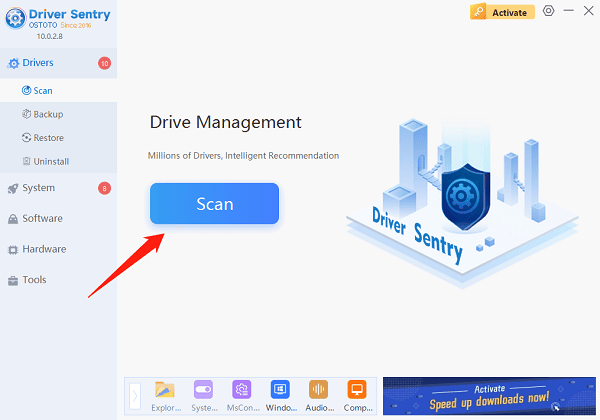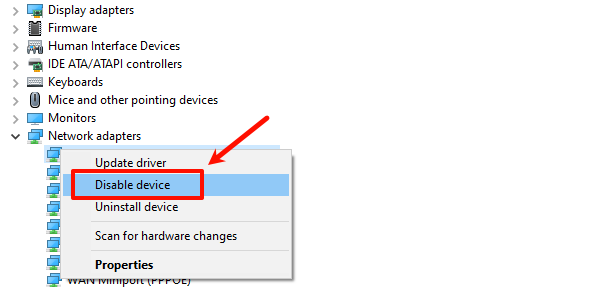
Some Windows users may encounter the "Ethernet doesn't have a valid IP configuration" error, preventing network connectivity and affecting normal internet access. This article will introduce several common solutions to help you quickly fix this issue and restore your network connection.
1. Restart Your Devices
Completely shut down your computer, wait a few minutes, and then restart it. A restart can clear temporary configurations that may be causing network issues.
Turn off your router and modem, wait a few minutes, and then turn them back on. Once restarted, the devices will re-establish the network connection and obtain a new IP address.
After restarting, check if your network is functioning properly. If the issue persists, proceed with the following steps.
2. Update Network Drivers
Outdated or corrupted network adapter drivers are one of the most common causes of the "Ethernet doesn't have a valid IP configuration" error. Keeping your network adapter drivers up to date can effectively resolve this issue. It is recommended to use Driver Sentry, which can automatically detect and update drivers, saving time and reducing the risk of downloading or installing incorrect drivers.
Click the download button to get the latest version of Driver Sentry. After installation, open the software and click "Scan".

Once the scan is complete, a list of missing or outdated drivers will be displayed. Locate the network adapter driver in the list and click the "Upgrade" button.
After updating, restart your computer to ensure the new drivers take effect properly.
3. Reset TCP/IP Protocol
Type "cmd" in the search bar, then right-click Command Prompt and select "Run as administrator".
In the Command Prompt window, enter the following commands one by one:
netsh winsock reset
netsh int ip reset

After executing these commands, you will see a message indicating that the reset is complete.
Restart your computer to apply the changes.
Check if your network connection is restored.
4. Disable and Re-enable the Network Adapter
Press Win + X and select "Device Manager".
In Device Manager, expand the "Network adapters" category.
Right-click your network adapter (e.g., Ethernet or Wi-Fi adapter) and select "Disable device".

Wait a few minutes, then right-click the adapter again and select "Enable device".
After completing this process, check if the network is functioning properly.
5. Manually Configure IP Address
Type "Control Panel" in the search bar and open it.
Click "Network and Sharing Center" > "Change adapter settings".
Right-click your active network connection (e.g., Wi-Fi or Ethernet) and select "Properties".
In the "This connection uses the following items section", find and select "Internet Protocol Version 4 (TCP/IPv4)", then click "Properties".
In the new window, select "Use the following IP address", then enter the following values:
IP Address: 192.168.1.10 (ensure it does not conflict with your router)
Subnet Mask: 255.255.255.0
Default Gateway: 192.168.1.1 (your router's IP address)

Under Use the following DNS server addresses, you can manually set DNS servers such as:
Preferred DNS Server: 8.8.8.8 (Google Public DNS)
Alternate DNS Server: 8.8.4.4 (Google Alternate DNS)
Click "OK" to save the settings, then check if the network connection is restored.
6. Run the Network Troubleshooter
Press Win + I to open the Settings menu.
Go to "Update & Security", then click "Troubleshoot" on the left panel.
Click "Additional troubleshooters". Locate "Network Adapter" and click "Run the troubleshooter".
Windows will begin scanning for network issues and attempt to fix them automatically.
After troubleshooting is complete, check if your network connection is restored.
By following these methods, you should be able to resolve the "Ethernet doesn't have a valid IP configuration" error and restore your network connection. If the issue persists after trying these solutions, consider contacting professional technical support or your internet service provider for further assistance.
See also:
How to Fix Windows 11 Unable to Enter Sleep Mode
Methods to Fix 'HP Printer Driver Is Unavailable'